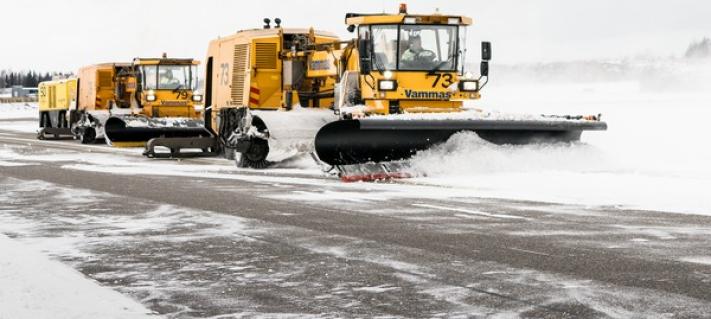The Terminal 2 (T2) expansion work will gear up this year, as the completely new area that serves air passengers begins to take shape in front of the current terminal building. The construction will be completed in phases from 2021–2022.
The terminal expansion project is carried out using an alliance model where planning and construction work is carried out together by the alliance members Finavia, SRV, and planning group members ALA Architects, HKP Architects and Ramboll Finland.
“In the alliance model, the role of management is even more important because the plans are developed in close-knit dialogue between planners, executers and the buyer,” says Merja Haapanen, Development Manager at Finavia.
Her role is to understand and guide all participants and foster better cooperation.
“We have an ambitious goal: to build a world-class airport and keep the customer experience at a high level throughout the whole project,” Haapanen says.
Construction sites must coexist with airport functions
The people in charge of operating the airport and the people in charge of the construction project meet face to face in weekly meetings.
“It is important that information doesn’t get stuck in a loop. That is why we bring people to the meetings who are responsible for passenger flows, security control, airport communications, airport advertising spaces, construction site management and traffic area maintenance, for example.”
In these meetings, participants go through construction plans and timetables for the coming weeks as well as possible feedback, for which corrective actions are agreed upon. There are over 20 participants each week, and the memos are shared with up to 90 people whose work is affected by the actions in the construction project.
“When the demands for operating the airport are clear for the builders as well, it is easier to ensure smooth travelling for our passengers,” Haapanen says.
Users are involved in planning
Martti Nurminen has worked as Project Manager in the Helsinki Airport development programme since it began in 2014. The programme is divided into several projects; the T2 expansion is only one of its elements.
“The users of our airport premises are also involved in the planning. One aspect of this is what we call virtual safaris.”
The virtual safari combines gaming technology and Building Information Modeling, providing everyone working on the project with accessible, accurate data. Future users of the airport are invited to a simulated guided tour in the premises currently being planned. Feedback from different target groups is collected for the next stages of planning.
“In the expansion of the non-Schengen terminal area, for example, our airline clients and commercial tenants, as well as Police and Customs, have been involved in its planning. This year, our goal is to also include passengers in the planning process of the area in front of the current terminal,” Nurminen says.
“We have had good experiences with user-oriented design processes. In planning Aukio, the new heart of the long-haul area of Helsinki Airport, the idea that led to changing the position of escalators came from users.”
Merja Haapanen is also an avid supporter of user-centred design.
“User experience is important in all design decisions, be it listening to the viewpoints of authorities, mapping passenger paths or planning solutions for pleasant indoor air or lighting.”
Another important principle is to plan facilities so that they can be converted to meet the future needs or users as well—flexibly, and with a reasonable price, Haapanen says.
“A space for a grocery store can be converted to smaller special stores, or one large cafe can be replaced by several specialty restaurants, for example.”
Long-term planning goes into each construction site
This year, the construction work at T2 brings changes to passenger paths at Helsinki Airport.
“Even before a construction site is set up, a shared understanding has to be achieved between all partners involved in the work. This way we can ensure passengers can get to departing flights in time or continue their travel home safely. With the reorganisation of our Customs area, for example, we have to plan diligently what work can be done and when, as customs operations cannot stop at any point,” Haapanen says.
It is important to make sure all new actors play by the same rules.
“By the summer, the T2 construction site is expected to be up and running but limited to a clearly defined area. Passengers will have to find new paths in and around the terminal, but many might not guess how much preparation work was actually required to us get to that point,” Haapanen concludes.



